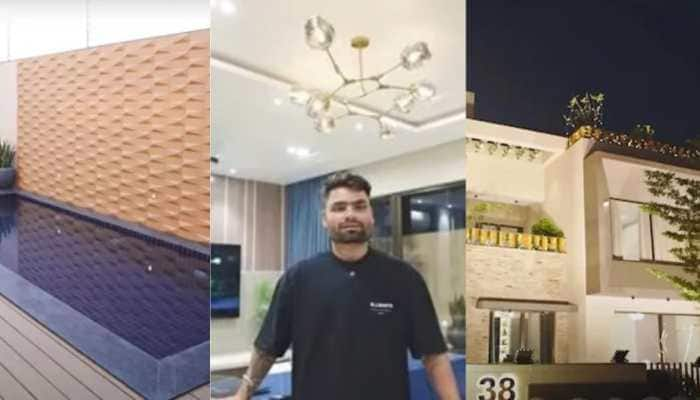Trio receives Chemistry Nobel for developments in electron microscopy
The Nobel Prize in Chemistry for 2017 has been declared.
Trending Photos
New Delhi: The winners of the prestigious Nobel Prize in Chemistry for 2017 have been declared.
The coveted award has been conferred jointly upon Jacques Dubochet, Joachim Frank and Richard Henderson for the high-resolution structure determination of biomolecules in solution.
BREAKING NEWS The 2017 #NobelPrize in Chemistry is awarded to Jacques Dubochet, Joachim Frank & Richard Henderson. pic.twitter.com/RUZSnArJHO — The Nobel Prize (@NobelPrize) October 4, 2017
In 1990, Richard Henderson succeeded in using an electron microscope to generate a three-dimensional image of a protein at atomic resolution. This breakthrough proved the technology’s potential.
Joachim Frank made the technology generally applicable. Between 1975 and 1986 he developed an image processing method in which the electron microscope’s fuzzy twodimensional images are analysed and merged to reveal a sharp three-dimensional structure.
Jacques Dubochet added water to electron microscopy. Liquid water evaporates in the electron microscope’s vacuum, which makes the biomolecules collapse. In the early 1980s, Dubochet succeeded in vitrifying water – he cooled water so rapidly that it solidified in its liquid form around a biological sample, allowing the biomolecules to retain their natural shape even in a vacuum.
Thanks to their team's new "cool method", involving electron beams to photograph bits of cells, "researchers can now routinely produce three-dimensional structures of biomolecules", the Nobel chemistry committee said.
"Researchers can now freeze biomolecules mid-movement and visualise processes they have never previously seen, which is decisive for both the basic understanding of life's chemistry and for the development of pharmaceuticals," the committee added.
This method allows bio-molecules to be kept frozen in their natural state without the need for dyes or fixatives.
It is used study the tiniest details of cell structures, viruses and proteins.
"When researchers began to suspect that the Zika virus was causing the epidemic of brain-damaged newborns in Brazil, they turned to cryo-EM (electron microscopy) to visualise the virus," the committee said.
The prize comes with nine million Swedish kronor (around USD 1.1 million or 943,100 euros).
Watch the very moment the 2017 #NobelPrize in Chemistry is announced! pic.twitter.com/xwoThkOpn8 — The Nobel Prize (@NobelPrize) October 4, 2017
Cryo-EM makes it possible to portray biomolecules after freezing them very fast (vitrification method) so its natural shape is preserved. pic.twitter.com/SXgeAVUk24 — The Nobel Prize (@NobelPrize) October 4, 2017
Last year the Nobel Prize in Chemistry was jointly awarded to Fraser Stoddart, Jean-Pierre Sauvage, Ben Feringa "for the design and synthesis of molecular machines".
(With PTI inputs)
Stay informed on all the latest news, real-time breaking news updates, and follow all the important headlines in india news and world News on Zee News.
Live Tv







)
)
)
)
)
)
)
)
)
)
